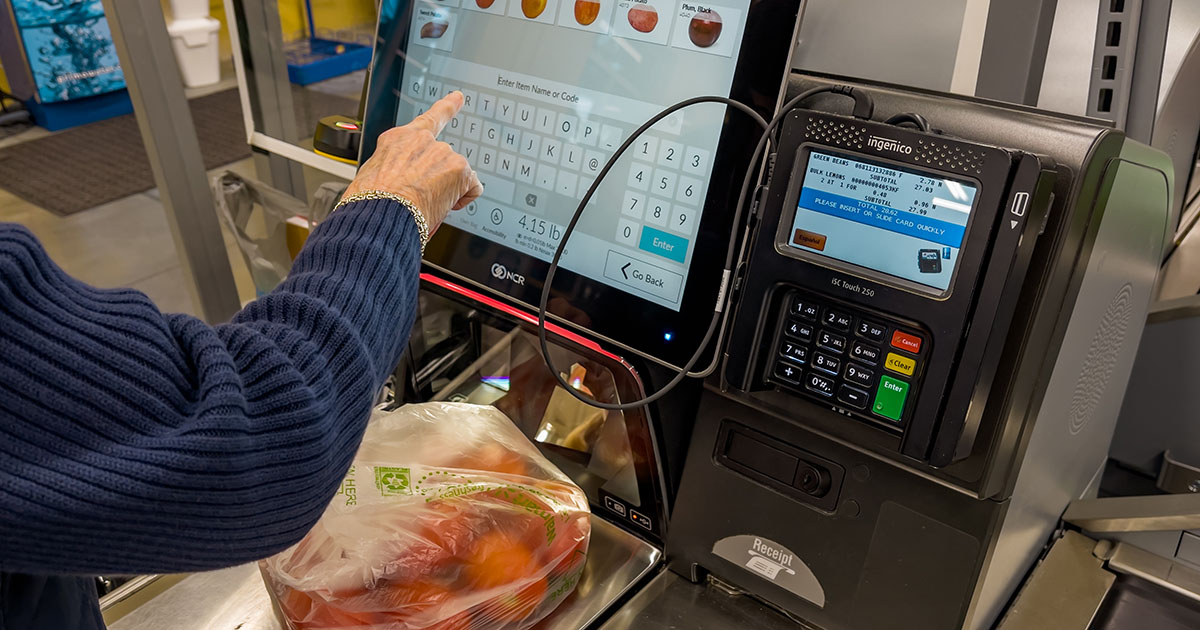Retailers Rethink Self-Checkout After Facing Hidden Costs

Originally marketed as a win-win for customers seeking shorter lines and for store owners looking to save on labor, self-checkout kiosks haven’t delivered for either group, leaving some experts wondering why they were installed so quickly.
Peter Cohan, associate professor of practice at Babson College, questioned the rapid deployment of self-checkout kiosks at grocery, pharmacy, and other retail stores considering the unexpected costs in technology and increased theft.
“I do not understand why retailers rolled out self-checkout so widely,” Cohan said.
“I doubt retailers did this carefully. My hunch is that they decided the technology would pay for itself because fewer employees would be required compared to regular checkout.”

Instead, recent studies show, businesses faced unexpected costs in technological upkeep and rampant self-checkout theft. Retailers who installed the self-checkout kiosks have reported between a 33% to 60% increase in stolen goods.
Self-checkout kiosks in stores like Walmart and Sam’s Club began to grow in the 2000s, and installation skyrocketed during the pandemic as retailers struggled to hire and customers wanted less human interaction. Roughly 30% of all grocery store transactions were from self-checkout lanes in 2021, almost double the amount in 2018, according to data from the Food Industry Association.
Popular U.S. grocery store Dollar General, for example, began increasing its reliance on self-checkout in summer 2022, and even piloted a few stores that would be entirely self-service. Dollar General CEO Todd Vasos backtracked on the kiosks in December 2023.
“We had relied … too much this year on self-checkout in our stores,” Vasos said. “We should be using self-checkout as a secondary checkout vehicle, not a primary.”
Frustrated Customers
Cohan, who teaches strategic problem solving and has been selected as a Top Retail Expert by RETHINK Retail for the last four years in a row, believes retailers acted without a full understanding of the self-checkout kiosks’ hidden costs.
“In my view, retailers should have introduced self-checkout in a single store or a small number of stores and analyzed whether the benefits of the technology exceeded the costs,” Cohan said. “In retrospect, retailers were foolish to expand self-checkout so widely.”
Customers, meanwhile, became frustrated with constant “unexpected item in bagging area” glitches and other self-service hiccups that often require more time and staffing to fix.
“I have experienced problems with self-checkout every time I have used it,” Cohan said. “I needed a person to help me solve some problem with the process.”
“In retrospect, retailers were foolish to expand self-checkout so widely.”
Peter Cohan, associate professor of practice at Babson College
Self-checkout systems also can hurt customer loyalty, according to a study published this month in the Journal of Business Research. The study found that customers who interacted with a store cashier were more loyal to the store than those who used self-checkout.
“Customers feel more rewarded, feel like they were treated more valuably by the store, and are more willing to return to the store in the future,” wrote Farhana Nusrat and Yanliu Huang, the authors of the study.
Retailers feeling the sting of self-checkout still have options If they want to win back customers, said Cohan.
“It seems clear to me that not all customers love self-checkout,” Cohan said. “I think retail stores should find ways to encourage customers to return to the store over the long term. For example, Walmart added groceries because people buy them every week. By providing quality products at the lowest price, consumers will return to Walmart each week, and while they are in the store, they may buy other items.”
And, nothing can beat heartfelt hospitality.
“Another thing retailers can do is establish good personal relationships between customers and employees,” Cohan said. “That will make them come back.”
Posted in Insights






